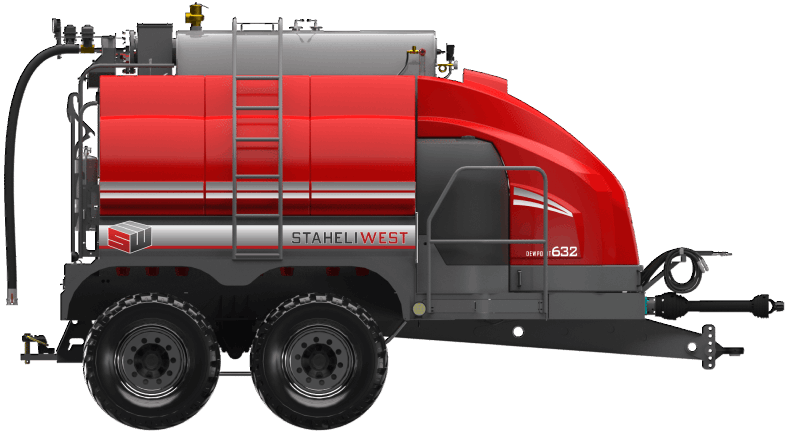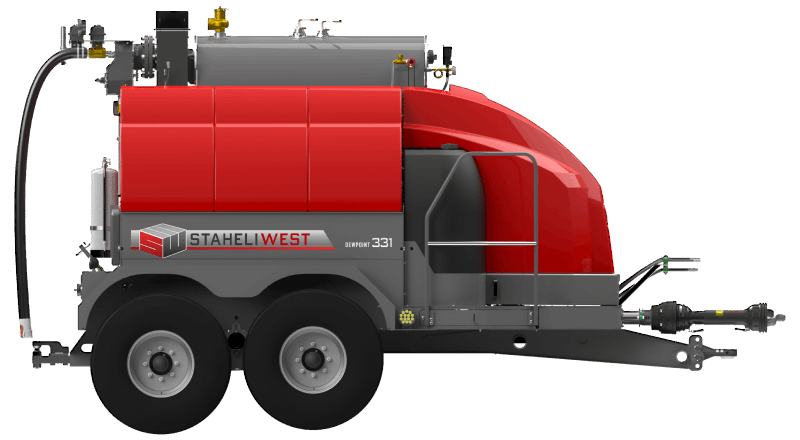
Balancing Your Forage Operation to Maximize Last Cutting Yields
The Steamer Can be the Centerpiece of a Balanced Operation
In our last blog, we talked about how DewPoint technology can increase last cutting yields, and we briefly introduced the concept of “Balancing an Operation”. This blog will cover this topic in more depth. We understand that each operation is different, but whatever your situation, we hope you will find some of these principles helpful.
Baling hay has always been a “pinch point” of productivity. Not anymore. In nearly every climate where dry hay is baled, DewPoint machines open a 12-24 hour/day baling window with consistent bale moisture and quality from the first bale to the last each day.
When we first started producing and selling the steamer, we promoted the fact that 1 tractor-steamer-baler combo would typically replace 4 conventional tractor-baler setups. Although that is still true today, we look at things a bit differently now.
What Are Your Goals
When we are talking with potential clients we often ask them what their goals are by having a steamer. What do you want to be able to do with the steamer? We especially like to ask them what their productivity goals are, so we typically ask, “Do you want to match your current production, or do you want to speed up your production?” Some clients want to keep their schedule and simply reduce the number of balers and tractors, and that’s totally okay. The steamer will still benefit these types of operations in terms of leaf retention, bale quality, less labor and equipment, and lifestyle. However, these operations could potentially be missing out on a huge factor that helps pay for the machine even faster.
The clients who say, “I want to double my productivity, or I want to speed up my cutting, raking, and baling.” are the ones who capture the same benefits mentioned above AND in addition, also experience the huge benefit of increased yields at the end of the year. So, instead of cutting a 4 conventional-baler fleet down to a 1 tractor-steamer-baler fleet, they cut down to a 2 tractor-steamer-baler fleet and double their productivity. This allows them to put up their hay twice as fast and get the water back on their fields sooner which adds valuable growing days when the weather is warmest.
The main point is to decide how many acres you want to bale each day. Consider the growing days you have in the growing season and how to get the most crop growth out of those days. Most farm operators who implement DewPoint technology into their operations choose to reduce the number of harvest days on each crop by 50% or more because, with the DewPoint machine you can schedule your baling according to your needs without the limits of natural dew. Each day you can shave off the harvest of each crop, is a day you can add to the growth of your final cutting at the end of the season, adding 1/2 – 1 ton of yield per acre. Some operations report getting an extra cutting of hay each year because of the efficiencies available with DewPoint technology.
Now, there is some planning involved while assessing the machinery and labor balance of an operation and to harmonize each step of the hay production and harvest to increase efficiency, reduce capital outlay, and increase yields and farm profits. The DewPoint technology becomes a centerpiece to this type of planning.
Balance Your Operation in Order to Put Up Your Entire Acreage in 3-4 Days
Since 1 tractor-DewPoint steamer-baler combo can cover up to 250 acres in an 8-12-hour day, a 1000-acre operation can be baled in 4 days or even less if desired. You never have to miss a day of baling because of a lack of natural dew, and in many cases, you can beat rainstorms with the ability to create your own baling moisture – even in the dry, windy conditions that often precede a weather front coming your way.
Many alfalfa operations like to bale from 25-35% of their total alfalfa acreage on each day so they have a 3-4-day baling window. These are the farms that see substantial yield increases on their last crop of the season, which increases profits.
After you decide the acres you want to bale each day, you simply calculate how many DewPoint steamers, balers, windrowers, rakes, and bale moving machines you will need, to cut, rake, bale and haul the same number of acres per day.
Balancing the Labor on Your Operation
The last major consideration is to balance your labor resources to complete all these operations on time. This is where it pays to stop and think about what to do. Good help is hard to come by. You will find that you can normally run a smaller crew when you shorten-up your crop cycle, especially if you can get down to the “3-day” cycle. Your windrower operators can become rake operators on the 3rd day out. That crew can then operate steamers/balers and haul the hay off the fields when the baling starts. Some good planning here will pay big dividends during your harvests, make life easier, and your work more profitable.
Conclusion
Balancing an operation may or may not be a new concept, but it is something that all steamer owners should consider. Do you want want to maintain the same level of production as you did before you bought the steamer? If so, that’s okay. The steamer will still profit the farm and make your life so much better. However, the steamer does make it possible to become more profitable by allowing you to get your hay up quicker and gain that extra yield at the end of the year. Take this into consideration. 1 ton gained per acre on the last cutting of a 1,500 acre farm means that you produced an extra 1,500 tons of hay. At current hay prices of $220 per ton, you would make an extra $330,000 on the year, because you properly balanced your operation and gained the extra growing days that come from putting up your hay in a 3-4 day window. Even if you only gained 1/2 ton per acre on that same farm, you would still make an extra $165,000 on the year.
We encourage all steamer owners and prospective buyers to assess your operations, crunch the numbers, and see what “balancing your operation” could do for your farm.






